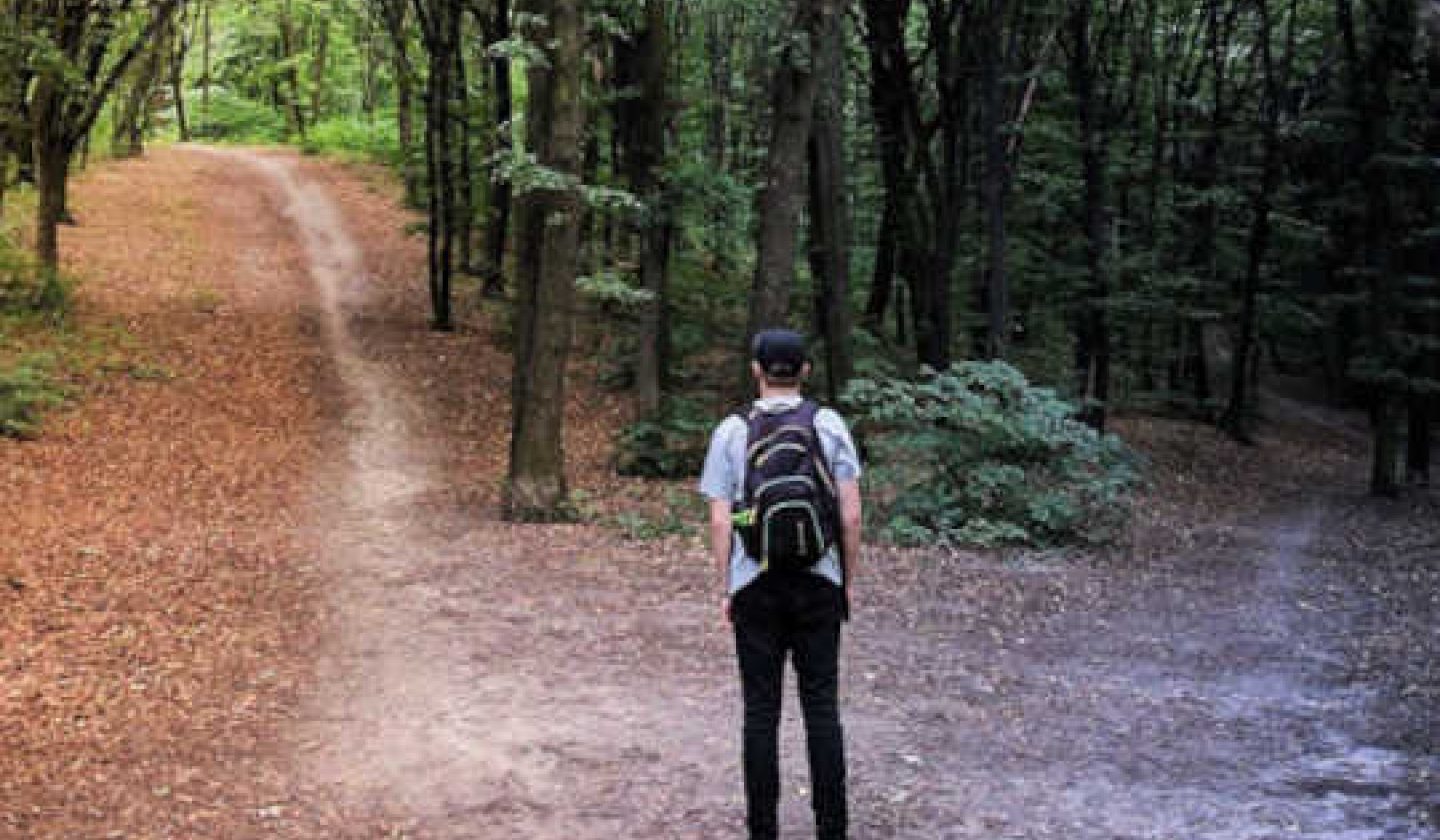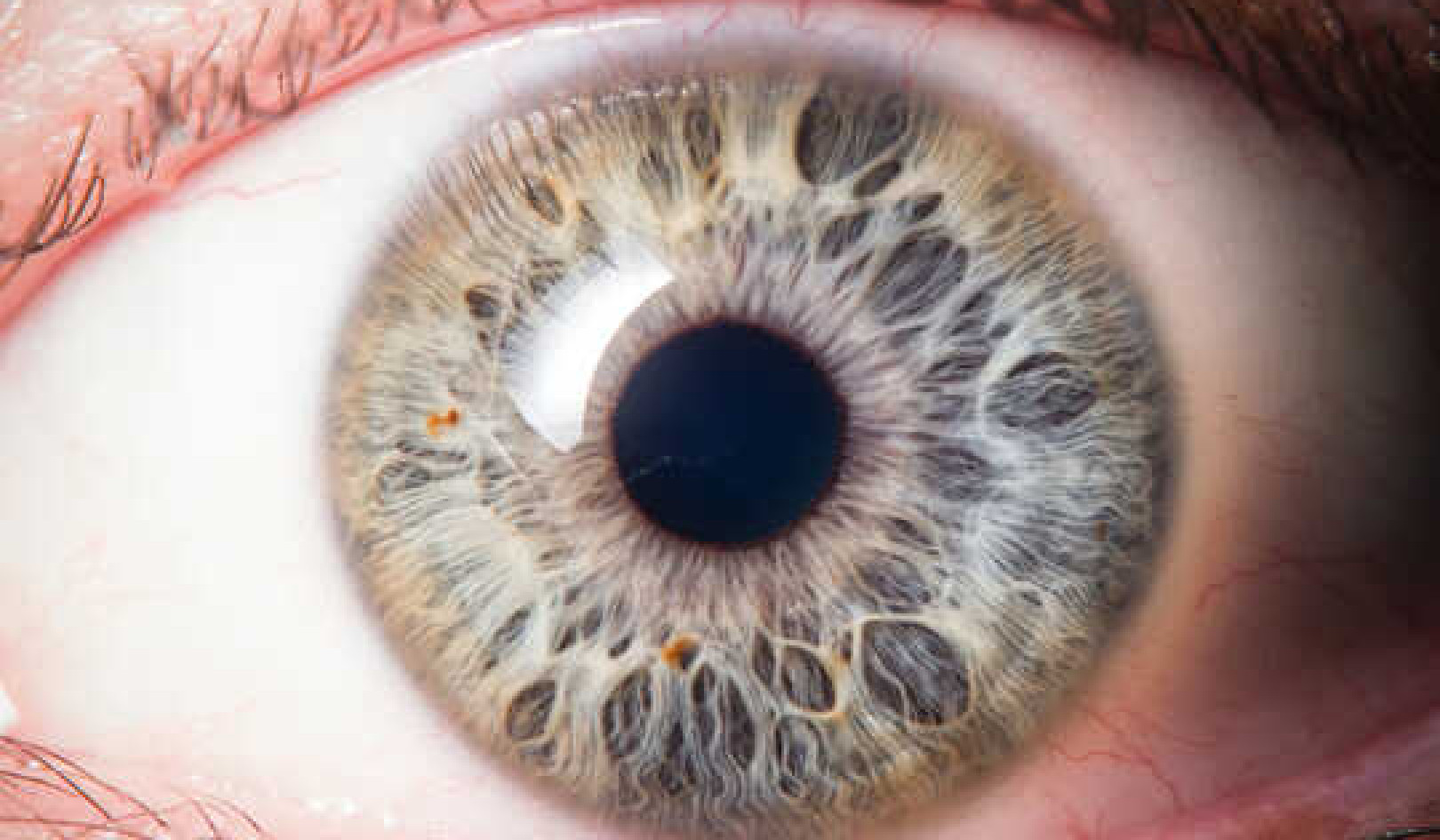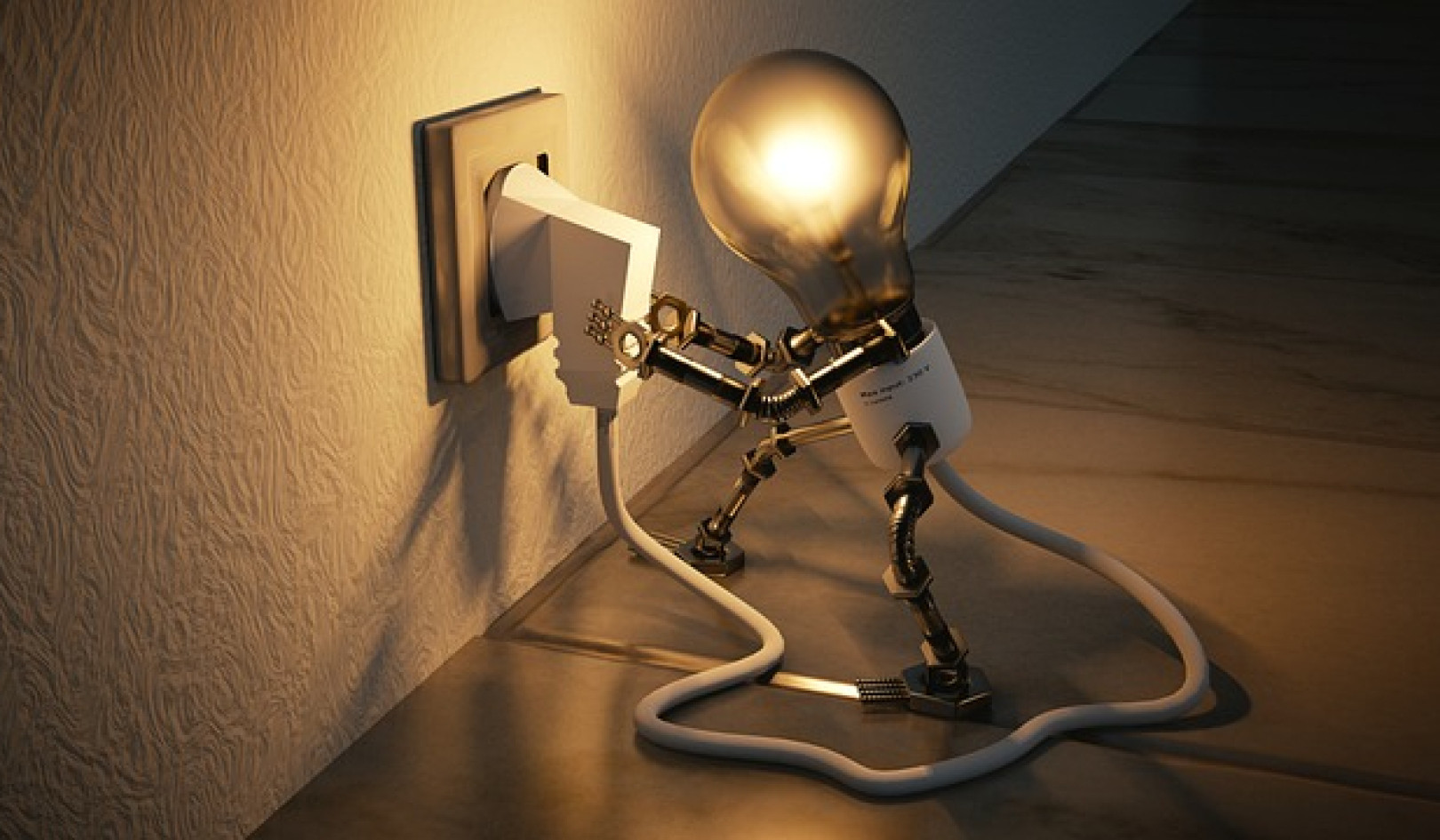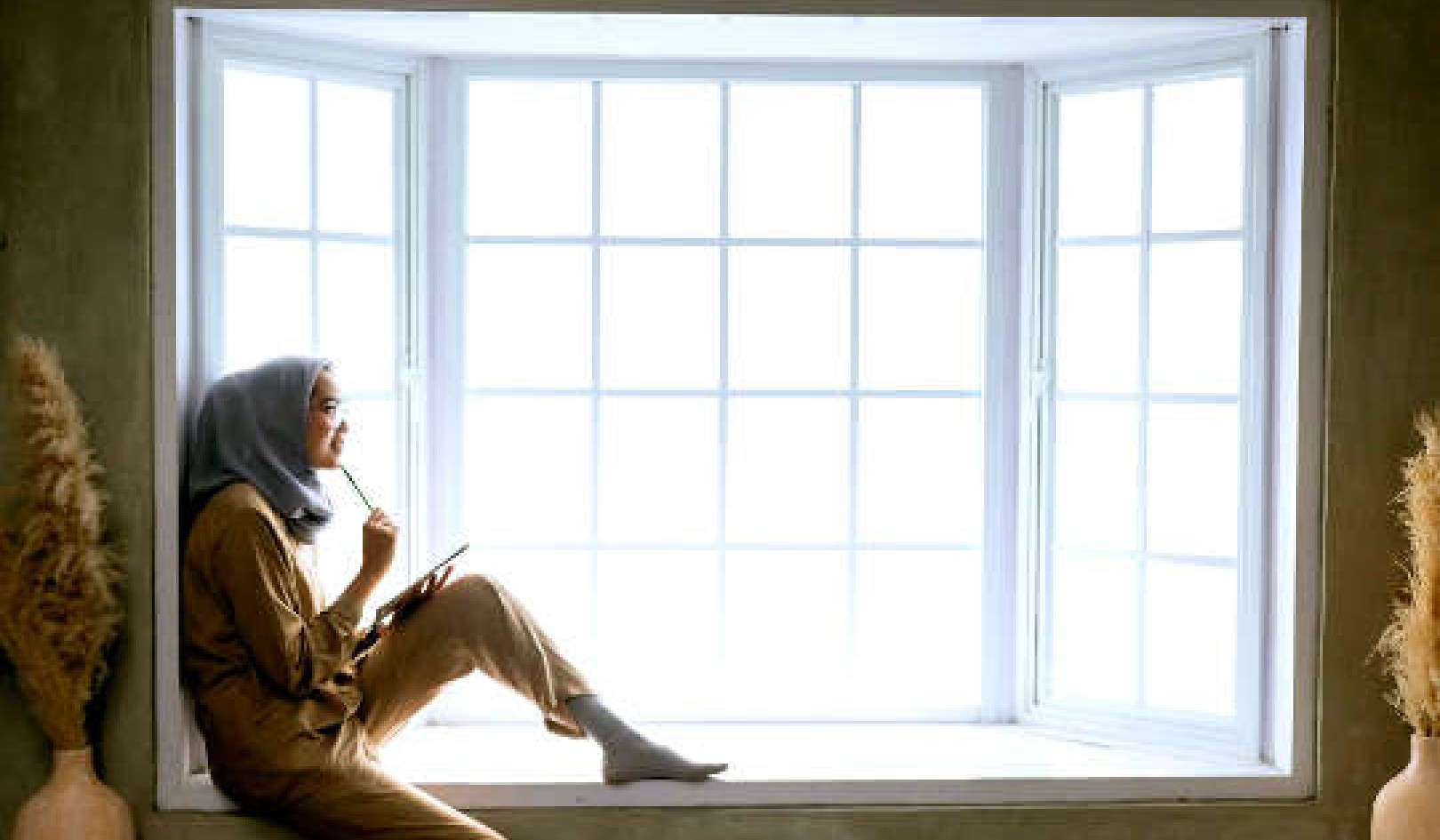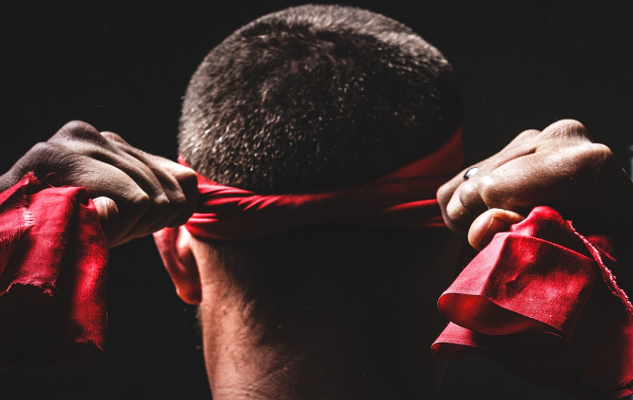
Image by Christoph Schütz
The living body is always going beyond what evolution,
culture and language have already built.
-- Eugene Gendlin
A few days into a silent Zen retreat, I was tasked with serving cookies. Had I been at home, the job would have involved me casually dumping them onto a plate and placing them on a table central to my guests. There is nothing casual about a Zen meditation retreat wherein activities are designed to still and awaken the mind to its habits.
In the kitchen away from fellow retreatants, as instructed, I placed each cookie top side up an inch apart from the next one to create a grid on a tray. Then I carried the tray to the meditation room to walk a designated route to serve the teacher first, everyone else after. I stood between two people whose hands were folded on their laps, their gaze downward. When I lowered myself to a kneel, the awaiting meditators brought palms together to acknowledge my presence before taking a cookie.
There is no chitchat; no eye contact, either. My focus remains on the tray and the hand that comes into the frame of my vision to retrieve a cookie. Once the people on either side of me take one, I rise and repeat the exercise with those further down the line until the entire room is served.
Nothing like days without talking and ample sitting upon a cushion facing a wall to shift awareness and render the cookie taking as telling a gesture as any psychological test.
The hand of my first taker glided above the tray before landing efficiently on the selection as if following through on a flight plan. Others were not as deliberate. Some hands hovered hesitantly over several cookies as if choosing the right one was as momentous as deciding upon a new job. Some plucked the cookie with all fingers, others with thumb and index fingers, another with the tips of the thumb and pinky. As if adhering to a cosmic baking rule, a few chose based on the grid, selecting or ignoring the cookie at the corner of the tray, in the center, or the one closest by.
This brief inconsequential activity distinguished one taker’s mood, thought process, and personality from the next person’s and rendered an entire exchange nonverbally. I was astounded by how much it revealed, my haptic sense and ability to read body language not previously applied to details of desert selection. The exchange made clear how much we rely on verbal language for communication, which we do to great effect, but also to our detriment.
Words Influence Our Perception and Beliefs
Words are everywhere—on clothing tags, food packages, electronics manuals, bills, traffic signs, train tickets, even on the body in the form of tattoos. In a text-based culture, verbal literacy is considered a sign of intelligence and a handicap for those who can’t read.
Certainly the necessity and precision of words is beneficial as seen in the difference between “weather” and “thunderstorm” and “love” and “lust.” They’re useful in providing specific instruction, such as the difference between meeting “at the airport” versus meeting “on lower-level baggage claim, door C,” the former of which may have us circling the terminals until a follow-up text with more specific details.
Concepts and specific words influenced our perceptions and beliefs. They function as sound, meaning, emotion, vibration, a pattern of energy leading us one way or another. We may not recognize a phenomenon without a word pointing it out. Consider “quantum entanglement” or “mansplaining.”
Propagandists manipulate language to their benefit. Consider how “fake news” got many to question truth and spread misinformation. Words set off a chain reaction of impressions. They cast spells. They get us to think or envision what might not otherwise have entered our mind.
Filters operate continually. Think you have a handle on the truth? You do, but there are always overlooked and missing parts.
The Direct Experience of Sensing
Words shine their light and shadow everywhere and, among their many uses, are particularly potent in helping us think. Therein, also, lie their limitations. Words give the impression of solidifying concepts and beliefs. A noun such as “mouse” or “freedom” suggests a staid definition unless we consult a dictionary or approach language with a poet or philosopher’s eye. If allowed, words can get in the way of actual perceiving. They can eclipse other views and obstruct direct experience.
With direct experience, we set aside concepts, beliefs, habits, and cultural conditioning. We set aside the known in favor of sensing. We feel into What Is. Attention redirects to any of the five senses and to the inner senses.
Look with the eyes but perhaps also the inner eyes. Feel with fingertips and skin but also extend the haptic sense to subtle energetic tendrils. Shift focus to what is immediate and shows up on the screen of your attention: the empty glass on the table, the light reflecting, awareness of shoulder tension, of inhaling deeply, of licking lips, of a vague something near the left side of the head, an inexplicable warmth. Become intimate with What Is even if it’s unfamiliar and hard to recognize, even if it stumps a predilection for quickly identifying and rushed conceptualizing.
Direct experience clears away mental, emotional, and energetic clutter. Bodily tensions relax and give way to a spaciousness that is startlingly real. Colors appear more saturated; lines demarcating shape contain both greater contrast and less. All impressions spill into everything else, the dualism that shaped perceptions yielding to something more complex, dynamic, and pure.
A pen is a pen but is also a compass needle pointing to a direction of thought and perspective. A family member leaves the room, but their energetic signature lingers behind. Last night’s dream is a template of today. The light of the mind tied to the sensing body illuminates its shadows. Everything reflects. We close our eyes to energy pulsing.
Direct experience can be disorienting and unnerving. All is not what it was or what we believe it should be. The frame and contents have shifted. It’s like the sudden loss of electricity; the hum of the appliances quiet, the display on the digital clock disappears, and the room darkens. No more computer work, no recharging the phone, and no hot dinner. We leave the room to retrieve a flashlight and candles, yet habitually flick the light switch in the closet despite the futility. Our usual trajectory of activities abruptly halted, we sit in the dark unsure of what to do and impatient for power to be restored.
It’s that pause that is of great interest and frequently contains unimagined opportunity. When the conditioned mind turns off, when expectations fall aside, when the default of our habits stop, when thinking’s fallibility is revealed, our senses rise to the occasion, and we get to practice somatic literacy. We feel the surroundings imposed upon us with heightened awareness. Our hand grazes the wall as we walk the darkened hallway, and we poke our fingers into the closet drawer to fumble for the candles and flashlight. We hear our heart beating and feel a nervous excitement while negotiating the new landscape.
Our senses intensified, we touch what is present. Oddly, the present seems to have more texture, volume, or scent, a flicker or flash where before there was nothing—or so we thought.
No ideas, only sense. Listen and feel. Look around and within. Anchor awareness in the body. Watch how you perceive phenomena. Watch how you trust or doubt the senses. Watch how you interpret and misinterpret events.
By anchoring in the body—embodying—focus shifts to the inflow and outflow of energy, to breath, to patterns dissolving and reforming, emotion, sensation and energy in motion, ripples and flux everywhere. Blocked or narrowed attention opens. Both brain hemispheres are engaged. New sights, perceptions, intuitions, and neural pathways form.
Return to the Body
Just this moment.
This silence or cacophony.
This sensation. That one, too.
This return to the body.
What is this body, and what is it capable of? How these questions are answered is determined by who does the answering and the filters they uphold.
For instance, a classical physicist may define the body as a combination of oxygen, carbon, hydrogen, nitrogen, calcium, and phosphorus. A medical doctor likely experiences the body anatomically as a collection of tissues, organs, and systems. A religious person likely understands the body as matter, soul and spirit. And an energy healer is likely to include subtle matter and vibration. I say yes to all of these.
The body is not any one thing, its shape, size, content, and definition dependent on age, circumstances, culture, and attention, all undergoing constant change. In any given moment, the body is more able or less, more free or less, somewhere on the continuum of conscious and oblivious of itself.
As an energy medicine practitioner, somaticist, poet, dancer and meditator with an open, sensitive, and inquisitive nature, I access multiple perceptual channels through touch, motion, words, energy, and silence, the particulars of one enhancing and redefining another. Each is a language that lights up different parts of the brain assisting in the perception of phenomena. Playing in the field of any one of them, or with a combination of them, can lead to experiencing uncommon levels of consciousness. This type of consciousness is always right here as common as air, but it requires switching the channels of perception to perceive.
Letting Ourselves Happen
Harvard Business School professor Gerald Zaltman goes so far as to claim that 95 percent our thinking is unconscious. All the more reason to write, draw, dance, listen, and meditate, to lift the unconscious to the surface, to bring the hidden into view, to voice the silence. Says fiction writer Clarice Lispector about writing, “The world has no visible order and all I have is the order of my breath. I let myself happen.”
When we let ourselves happen, the body is allowed its breath and breadth. Energetic, emotional, and mental patterns relax and create a spaciousness. Patterns established in childhood and from trauma, loss, habits, and conditioning—all of which impact us and form our body—shift. The mind opens to what was previously off-limits. Sadness, despair or any other default emotion toggles toward joy, curiosity, anger, or whatever else naturally arises. Feelings previously locked away are released.
The body in flow is allowed its grow. What was foreground recedes into the background or the backdrop gains new details. The story that was our life revises. Healing deemed impossible becomes possible. We reestablish a relationship with the personal self, which we find is connected to all else.
To be in touch with the body means being in touch with influences, a relationship of mutuality, of give and take, of gravity holding us in place even as we move of our own volition. We consider what wants to emerge, sensing along the way, guided by the body’s intelligences without rushing headstrong to conclusions that may be ill-fitting or antiquated.
We balance at the edge of sensing and understanding, one touch or glimpse or sound or footstep after another, all the while remaining intimate with our flesh and its field of energy moment by moment instantiating, our process of attention and allowing determining what manifests and what continues to hibernate.
The repercussions of this embodied homecoming, both calming and invigorating, locates us within our body and situated in place. We discover how we are part of, not apart from, the environment and Earth itself.
By coming home to the body, dancer and philosopher Sondra Fraleigh says not only “body comes to mind,” but mind comes to body and “the earth of the body and its natural intelligence, is tilled.” Embodying shows Earth reaching into and touching us, as us, as simultaneously we stand and feed upon Earth, the minerals of our body the same as those around us.
Try This
You can do this either standing or seated. Place your feet firmly on the floor. Imagine that a window at the arches of the feet opens. What comes in is earthly energy, the planet’s vibration, its breath. Exiting the window is an exhalation of energy no longer personally needed. If it helps, imagine the exchange with color. Make any small adjustment like spreading toes or elongating the spine to amplify the process. Keep your awareness on the soles of your feet. Notice what you notice.
Frequently I do a version of this grounding exercise before facilitating a healing session to stay in flow and not take on a client’s imbalance. Grounding exercises are foundational to practicing martial arts like t’ai chi or tae kwon do.
This ability to somatically and energetically connect to Earth connects us to the felt sense of the present moment and our body’s alignment. It also expands awareness to this radically changing planet that we need for survival. To be in dialogue with blood, breath, tissue and bones, we are, by extension, in dialogue with air, dirt, water, fungus, plants, birds, and beasts.
Grounding shares similarities with the Japanese practice of shinrin-yoku, or forest bathing—an ecotherapy where participants go to a forest or any natural habitat and immerse themselves in nature to lower anxiety and blood pressure and improve their health.
Copyright 2023. All Rights Reserved.
Adapted with permission of the publisher,
Bear & Co., an imprint of Inner Traditions Intl.
Article Source:
BOOK: Ecosomatics
Ecosomatics: Embodiment Practices for a World in Search of Healing
by Cheryl Pallant
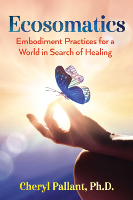 In this practical guide, Cheryl Pallant explains how ecosomatics—embodiment work for personal and planetary health—can help us shift our consciousness through expanded listening with all our senses and embracing the interconnections between our inner and outer worlds. Throughout the book, the author offers ecosomatic and embodiment exercises to help you expand perception, develop somatic intelligence, let go of limiting beliefs, lessen fear, anxiety, and alienation, and open to levels of awareness that allow you to tune in to a greater vision of what is humanly possible.
In this practical guide, Cheryl Pallant explains how ecosomatics—embodiment work for personal and planetary health—can help us shift our consciousness through expanded listening with all our senses and embracing the interconnections between our inner and outer worlds. Throughout the book, the author offers ecosomatic and embodiment exercises to help you expand perception, develop somatic intelligence, let go of limiting beliefs, lessen fear, anxiety, and alienation, and open to levels of awareness that allow you to tune in to a greater vision of what is humanly possible.
Revealing how to incorporate embodiment into everyday life, this guide shows how the body is a process that is part of nature, not separate from it, and that by embarking on the transformative inner journey, we can bring healing to the world around us.
For more info and/or to order this book, click here. Also available as a Kindle edition.
About the Author
 Cheryl Pallant, PhD is an award winning author, poet, dancer, healer, and professor. Her newest book is Ecosomatics: Embodied Practices For a World in Search of Healing. Previous books include Writing and the Body in Motion: Awakening Voice through Somatic Practice; Contact Improvisation: An Introduction to a Vitalzing Dance Form; Ginseng Tango; and several poetry collection including Her Body Listening. She teaches at University of Richmond and leads workshops throughout the U.S. and abroad.
Cheryl Pallant, PhD is an award winning author, poet, dancer, healer, and professor. Her newest book is Ecosomatics: Embodied Practices For a World in Search of Healing. Previous books include Writing and the Body in Motion: Awakening Voice through Somatic Practice; Contact Improvisation: An Introduction to a Vitalzing Dance Form; Ginseng Tango; and several poetry collection including Her Body Listening. She teaches at University of Richmond and leads workshops throughout the U.S. and abroad.
Visit the author's website at CherylPallant.com.





















